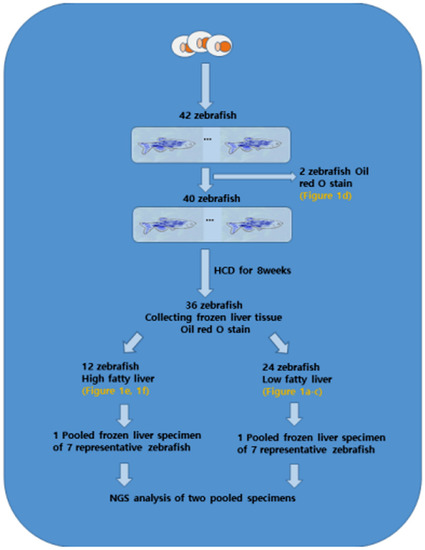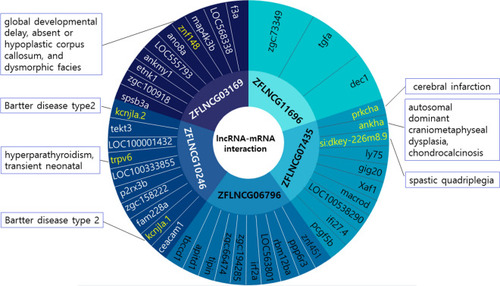- Title
-
Long noncoding RNAs associated with nonalcoholic fatty liver disease in a high cholesterol diet adult zebrafish model
- Authors
- An, H.J., Lee, Y.J., Choe, C.P., Cho, H.K., Song, D.H.
- Source
- Full text @ Sci. Rep.
|
Workflow diagram of the feeding and tissue processing of zebrafish. |
|
A representative frozen section (× 200, hematoxylin and eosin) |
|
A total of 1772 genes were upregulated and 3293 genes were downregulated with statistical significance |
|
The human tissue expression profiles represented by FPKM/TPM (a) and exosome expression profiles represented by FPKM (b) were evaluated on 8 conserved lncRNAs. invasive NFPAs, invasive nonfunctional pituitary adenomas exosomes; non-invasive NFPAs, non-invasive nonfunctional pituitary adenoma exosomes; tuberculosis, active tuberculosis patient serum exosomes; A431, squamous cell carcinoma cell line exosomes; BJ, foreskin fibroblast cell line exosomes; HepG2, hepatocellular carcinoma cell lines; MCF7, human breast cancer cell line exosomes; MDA-MB-23a, human breast cancer cell line exosomes; normal people blood, normal people blood exosomes (http://www.noncode.org/). |
|
lncRNA–mRNA (protein-coding gene) interaction network for 5 out of 8 conserved lncRNAs in zebrafish. Among the eight candidates, five (ZFLNCG11695, ZFLNCG07435, ZFLNCG06796, ZFLNCG10246, and ZFLNCG03169) of which were identified as having related protein-coding genes of zebrafish, and three (ZFLNCG07435, ZFLNCG10246, and ZFLNCG03169) of which were identified as having genes (prkcha, ankha, si:dkey-226m8.9, kcnjla.2, trpv6, kcnjla.1, and znf148) related to human disorder. Information provided by ZFLNC ( |
|
Frozen sections of each zebrafish with longitudinal sections were used for fat staining. |






